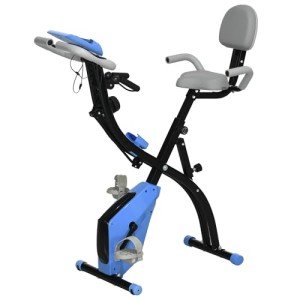The Benefits and Mechanics of Using a Bicycle for Workout
Cycling, a versatile and efficient kind of exercise, has been getting popularity as a low-impact, high-reward activity. Whether you're an experienced professional athlete or a novice wanting to enhance your fitness, riding a bicycle can offer a large variety of health advantages. This post explores the mechanics of cycling as a workout, its physical and mental advantages, and supplies pointers for beginning.
Intro to Cycling as a Workout
Cycling is a low-impact, full-body exercise that can be adapted to different fitness levels and objectives. It primarily targets the lower body, but it also engages the core and upper body, making it a thorough workout. Whether you're cycling outdoors on a road bike or inside on a stationary bike, the benefits are various.
Physical Benefits of Cycling
Cardiovascular Health
- Cycling is an excellent cardiovascular exercise that assists enhance heart health. It increases heart rate, boosts lung capability, and enhances blood circulation, decreasing the risk of heart problem, stroke, and hypertension.
Muscle Strengthening
- Cycling mostly works the quadriceps, hamstrings, calves, and glutes. It also engages the core muscles for stability and the upper body for balance and steering. Regular cycling can result in more powerful, more toned muscles.
Weight Management
- Cycling is a high-calorie-burning activity. Depending on the intensity and period, a 150-pound person can burn around 500-800 calories per hour. This makes it an efficient tool for weight loss and weight management.
Joint Health
- Unlike high-impact exercises like running, cycling is gentle on the joints. It supplies a low-impact way to remain active, making it ideal for people with joint discomfort or injuries.
Enhanced Balance and Coordination
- Cycling requires balance and coordination, which can enhance in time. This can be particularly beneficial for older grownups or those recovering from injuries.
Mental Benefits of Cycling
Stress Reduction
- Cycling can be a meditative and relaxing activity. The balanced movement and the outdoors can help in reducing stress and stress and anxiety, promoting psychological well-being.
Mental Clarity
- Exercise, including cycling, releases endorphins, which are natural state of mind lifters. This can enhance mental clarity and cognitive function.
Increase in Confidence
- Accomplishing fitness goals, whether it's finishing a long ride or enhancing speed, can boost self-confidence and self-confidence.
Types of Bicycles for Workouts
Road Bicycles
- Created for speed and performance on paved roadways, road bikes are lightweight and have thin, smooth tires. They are ideal for long-distance trips and improving cardiovascular fitness.
Mountain Bicycles
- Built for off-road terrain, mtb have broader, knobby tires and a durable frame. They are exceptional for developing strength and endurance, particularly in hilly or rough surface.
Hybrid Bicycles
- Integrating aspects of road and mtb, hybrid bikes offer versatility. They are ideal for both paved and unpaved surfaces and are great for general fitness and commuting.
Stationary Bicycles
- Suitable for indoor workouts, stationary bicycles can be adjusted for resistance and intensity. They are convenient for all weather conditions and can be used for interval training and high-intensity workouts.
Tips for Getting Started
Choose the Right Bike
- Select a bike that fits your fitness goals and convenience level. Consider aspects like surface, distance, and budget plan.
Invest in Safety Gear
- Always use a helmet, and consider other safety gear like gloves, knee pads, and reflective clothing, particularly if you're cycling outdoors.
Start Slow
- If you're new to cycling, start with short, simple trips and gradually increase the period and strength. This helps prevent injuries and construct endurance.
Stay Hydrated and Fueled
- Drink a lot of water in the past, during, and after your trips. Eat a well balanced diet to fuel your exercises and aid recovery.
Sign up with a Community
- Consider signing up with a cycling club or group to remain inspired and fulfill similar people. This can likewise offer opportunities for group rides and training.
FAQs
Q: Is cycling a great workout for novices?
- Yes, cycling is an outstanding workout for beginners. It is low-impact, simple to learn, and can be adapted to numerous fitness levels. Start with brief, easy rides and slowly increase the intensity and duration.
Q: How often should I cycle for fitness?
- Aim for at least 150 minutes of moderate-intensity cycling weekly, or 75 minutes of vigorous-intensity cycling. This can be broken down into much shorter, more frequent sessions, such as 30 minutes, 5 times a week.
Q: Can cycling aid with weight reduction?
- Yes, cycling is a high-calorie-burning activity that can aid with weight reduction and weight management. Combine Fitness Bikes For Sale with a healthy diet for best outcomes.
Q: What are the best times to cycle for a workout?
- The very best time to cycle depends upon your schedule and preferences. Morning trips can assist start your metabolic process and increase energy levels, while evening rides can be a fantastic way to loosen up after a long day.
Q: Do I require unique clothes for cycling?
- While you do not require unique clothing, comfortable, breathable gear is recommended. Think about cycling shorts for convenience and a moisture-wicking top to remain dry. If you're cycling outdoors, reflective clothes can improve presence.
Cycling is a flexible and gratifying type of exercise that provides various physical and mental advantages. Whether you're cycling outdoors or inside, it can be tailored to your fitness objectives and preferences. By selecting the best bike, buying safety equipment, and following some fundamental suggestions, you can enjoy a satisfying and effective workout. So, hop on a bike and begin pedaling your method to much better health and wellness.

